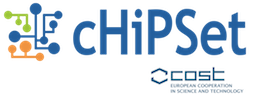Case Study Team
Coordinators
| Id | Name | Institution (type*) | Related WG | Role in the team |
| 1 | Sanja Brdar | BioSense Institute, RS (A) | WG2, WG3 | Coordinator |
| 2 | Apostolos Papadopoulos |
Aristotle University of Thessaloniki, GR, (A) |
WG2 | Vice-Coordinator |
Team members
| Id | Name | Institution (type*) | Related WG |
| 1 | Olivera Novović | BioSense Institute, RS (A) | WG1, WG4 |
| 2 | Nastasija Grujić | BioSense Institute, RS (A) | WG4 |
| 3 | Horacio Gonzalez-Velez | National College of Ireland, IE (A) | WG2 |
| 4 | Kenth Engø-Monsen | Telenor Group, NO (I) | WG4 |
| 5 | Ciprian-Octavian Truică | University Politehnica of Bucharest, RO (A) | WG1 |
| 6 | Siegfried Benkner | University of Vienna, AT (A) | WG2 |
| 7 | Enes Bajrović | University of Vienna, AT (A) | WG2 |
*A-academia, I-industry
Addressed Problem
There is a tremendous growth of new applications that are based on the analysis of data generated within mobile cellular network. Mobile phone service providers collect large amount of data with potential value for improving their services as well as social good applications. For example, every time user makes interaction by mobile phone (SMS, call, internet), a Call Detail Record (CDR) is created in Telecom operator database. CDRs log the user activity for billing purposes and network management, but provide opportunities for different applications such as urban sensing, transport planning, social analysis and monitoring epidemics of infectious diseases, etc.
Existing Solution(-s) (Models, Tools)
Typical workflow for processing spatio-temporal data, such as mobile phone data used in this case study, contains numerous queries across locations and timestamps of interest, spatial/time aggregations and summarization. Existing solutions are not concentrated on the execution time, scalability, and throughput that are of high importance for the implementation and near real-time settings.
Proposed Solution(-s) (Models, Tools)
Under case study we will examine all steps from raw data, processed data, analytics to the final results, visualizations and storytelling from data.
- Identifying typical workflows in processing telecom data (queries, data structures, algorithms); Formulating research questions and design appropriate computational experiments in close cooperation with industrial partner
- Exploring possible Big Data Big Data frameworks /libraries (Spark, Hive, Mlib, GraphX…) for analyzing very large data sets provided by mobile network operators; Benchmarking of different infrastructures (Multi Core CPUs, clusters, GPUs) and parallelizing algorithms for processing and analytics of mobile phone data
- Machine learning on extracted activity, mobility patterns and social connectivity graphs that are produced from mobile phone data
- Data fusion with other sources (satellite data, location semantics data, events, pollution, economic development indicators…)
Practical Scenarios (-s)
Through practical scenarios we aim to leverage mobile phone data for different applications such as urban sensing, mobility planning, pollution estimates, event detection, tourism, quantifying rural-urban interactions. Currently two practical scenarios are under work and development:
The first practical scenario is focused on Apache Spark framework with aim to deliver performance evaluation for different processing flows (different spatial and time resolution, different analytics methods applied on the top of the obtained graphs, e.g. community detection, evolving graphs patterns…). Data for this practical scenario are open and originate from Telecom Italia.
The second scenario explores processing and analytics frameworks for extracting information on the activities and mobilities of users during the largest summer festival in Novi Sad, Serbia. Data for this practical scenario are under non-disclosure agreement and originate from Telekom Serbia provider.
Supplementary Material
TBC
